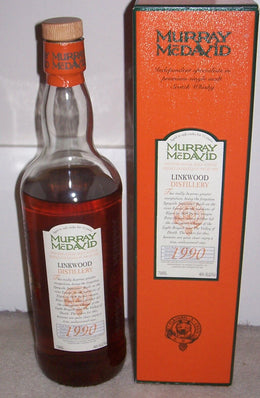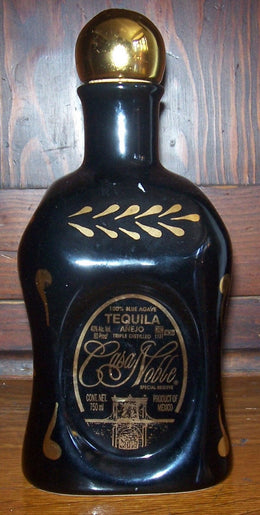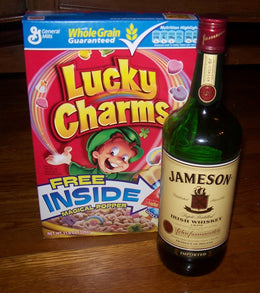I hereby anoint every Wednesday Whiskey Wednesday on Recent Eats, where I will review or otherwise opine on my favorite spirit. Starting next week, I will be doing some scotch reviews, so I thought I would give a basic scotch outline for anyone who's not experienced with this elixir of life.

(Image Source: Liquor.com)
What is Scotch?
Scotch is a whiskey made in Scotland (hence name), where by the way, they spell it whisky. The primary grain used in Scotch is barley. Generally, we can break Scotch down into two major categories:
1. Single Malts
A single malt is a Scotch made by a single distillery from 100% malted (germinated) barley. Single malts you might have heard of if you are not a scotch aficionado are Glenfiddich, Glenlivet, The Balvenie and The Macallan.
2. Blended Scotch
A blended Scotch is a scotch made by a company that buys single malts from a variety of distilleries and blends them with cheaper and usually more neutral tasting grain whiskies. All of the biggest selling Scotches are blends: J&B, Dewar's, Cutty Sark, Johnnie Walker, Chivas Regal, etc.
While there are some examples of high quality blends, I have found that I favor single-malts; they seem to have more distinct and interesting flavors.
What does Scotch taste like?
Scotch is a complex tasting spirit containing a wide variety of flavors and aromas that can be found across various scotches or in a single bottle. One of the most notable flavors is peat or smoke. In making scotch, the malted barley is dried by a kiln which is sometimes fueled by peat, a fossil fuel derived from swamp moss, haggis and other Scottish things. The peat imparts a smoky taste to the spirit. Sometimes the smoke is subtle and sometimes it is like drinking Liquid Smoke straight out of the carton. Islay, an island off the west coast of Scotland, is famous for making smoky Scotches like Lagavulin, Ardbeg and Laphroaig.
Other common flavors associated with Scotch include "malt" which is the flavor of the barley and is that which makes Scotch taste like Scotch. In addition, many Scotches that are aged in old sherry casks have a distinct sherry taste. Macallan, in particular, is known for its sherry flavors.
Where can I buy scotch?
For the Southern California beginning scotch drinker, you can get all you need to introduce yourself to Scotch at your local Trader Joe's. Next week I will describe some of the excellent single malts available there.
For the intermediate to advanced drinker, I have found no better place to purchase Scotch than Wine & Liquor Depot in Van Nuys. They have a selection that rivals any I've seen in the US, with an emphasis on independent bottlings.
Where can I learn more about Scotch?
The best introductory text on Scotch is the slim but extremely instructive Instant Expert's Guide to Single Malt Scotch by Kevin Erskine, available from Doceon Press. I can't say enough good things about this book. There are a lot of books about Scotch, but most of them are written assuming a fairly vast knowledge. Precious few give the type of basic, helpful information needed by a novice. I had been drinking and reading about Scotch for several years before I bought a copy, and I learned some very basic things that had previously eluded me. If you want to get into Scotch, you owe yourself a copy. (Kevin Erskine is also the author of the excellent Scotchblog, the leading website on Scotch industry news and happenings.)
There is also an excellent whiskey posting board, with loads of Scotch information, on the website for Whisky Magazine, a British publication with lots of great news and insight into the world of whiskey.
How do you drink Scotch?
As with bourbon and other whiskies, Scotch should be enjoyed straight or with a dash of water. However, if the occasional ice cube strays into your glass, it won't kill you (though the Scots might since they disapprove of such adulteration).
As with wine, professional Scotch tasters have an annoying habit of coming up with bizarre descriptions of Scotch's taste. Their reviews often devolve into free association, such as "malt, smoke, ripe apricots, blueberry jam, Skippy peanut butter, spring almonds, extra virgin olive oil, fresh cod livers, turnip stalks...etc." I find these descriptions to be pretty much useless in determining whether I will like a given bottle of scotch, and alienating to new imbibers.
In addition, since so many of the experts are British, they use descriptive terms that have little meaning to Americans, like treacle, for example. I don't know what treacle is, what it smells like or what it tastes like, although I have a vague recollection that Harry Potter eats it at some point, and it may or may not have turned him into a ferret. Another popular descriptive term is "iodine." This is the 21st century...who the hell knows what iodine smells like anymore? And don't even get me started on "heather"!
In any case, I swear an oath unto the Great Scotsman to never engage in pretentious tasting note free association. In addition, I will never, on this blog, utter the terms tipple, dram, angels' share or New Labour. To the extent I use similes, I will try to do so only when there is a clearly evident comparison to be made to a common taste or smell. This is my oath to you the reader.
Image and text courtesy of Sku.


Sku eats, drinks and is merry in the Koreatown neighborhood of Los Angeles and beyond.







